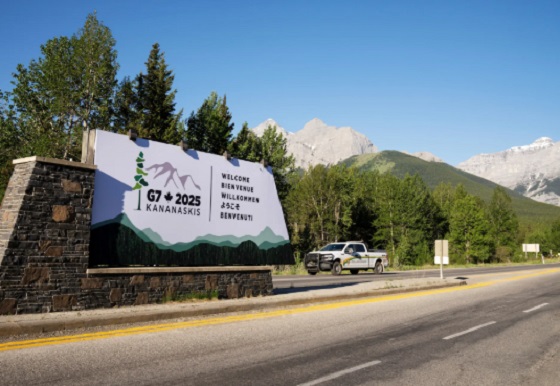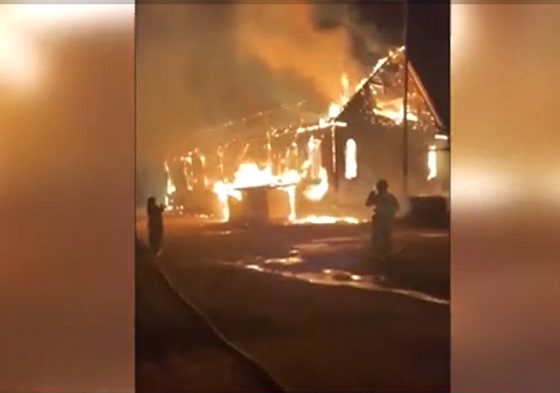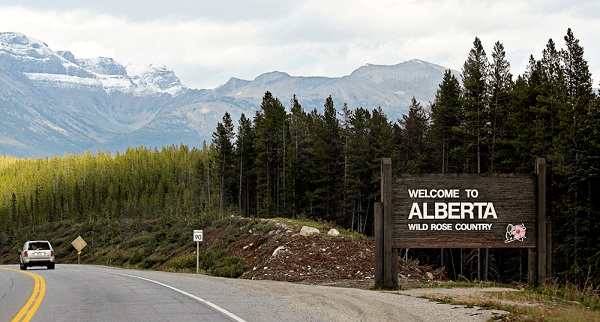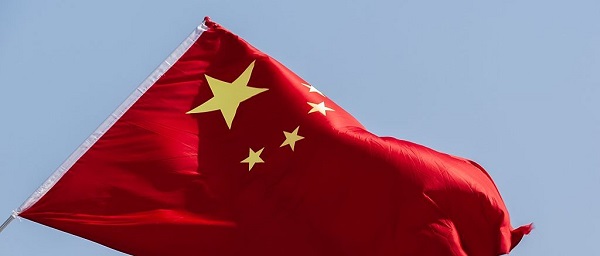Uncategorized
When gunman advanced on New Zealand mosque, 1 man ran at him

CHRISTCHURCH, New Zealand — When the gunman advanced toward the mosque, killing those in his path, Abdul Aziz didn’t hide. Instead, he picked up the first thing he could find, a credit card machine, and ran outside screaming “Come here!”
Aziz, 48, is being hailed as a hero for preventing more deaths during Friday prayers at the Linwood mosque in Christchurch after leading the gunman in a cat-and-mouse chase before scaring him into speeding away in his car.
But Aziz, whose four sons and dozens of others remained in the mosque while he faced off with the gunman, said he thinks it’s what anyone would have done.
The gunman killed 49 people after attacking two mosques in the deadliest mass shooting in New Zealand’s modern history.
The gunman is believed to have killed 41 people at the Al Noor mosque before driving about 5
White supremacist Brenton Tarrant, 28, has been charged with one count of murder in the slayings and a judge said Saturday that it was reasonable to assume more charges would follow.
Latef Alabi, the Linwood mosque’s acting imam, said the death toll would have been far higher at the Linwood mosque if it wasn’t for Aziz.
Alabi said he heard a voice outside the mosque at about 1:55 p.m. and stopped the prayer he was leading and peeked out the window. He saw a guy in black military-style gear and a helmet holding a large gun, and assumed it was a police officer. Then he saw two bodies and heard the gunman yelling obscenities.
“I realized this is something else. This is a killer,” he said.
He yelled at the congregation of more than 80 to get down. They hesitated. A shot rang out, a window shattered and a body fell, and people began to realize it was for real.
“Then this brother came over. He went after him, and he managed to overpower him, and that’s how we were saved,” Alabi said, referring to Aziz. “Otherwise, if he managed to come into the mosque, then we would all probably be gone.”
Aziz said as he ran outside screaming, he was hoping to distract the attacker. He said the gunman ran back to his car to get another gun, and Aziz hurled the credit card machine at him.
He said he could hear his two youngest sons, aged 11 and 5, urging him to come back inside.
The gunman returned, firing. Aziz said he ran, weaving through cars parked in the driveway, which prevented the gunman from getting a clean shot. Then Aziz spotted a gun the gunman had abandoned and picked it up, pointed it and squeezed the trigger. It was empty.
He said the gunman ran back to the car for a second time, likely to grab yet another weapon.
“He gets into his car and I just got the gun and threw it on his window like an arrow and blasted his window,” he said.
The windshield shattered: “That’s why he got scared.”
He said the gunman was cursing at him, yelling that he was going to kill them all. But he drove away and Aziz said he chased the car down the street to a red light, before it made a U-turn and sped away. Online videos indicate police officers managed to force the car from the road and drag out the suspect soon after.
Originally from Kabul, Afghanistan, Aziz said he left as a refugee when he was a boy and lived for more than 25 years in Australia before moving to New Zealand a couple of years ago.
“I’ve been to a lot of countries and this is one of the beautiful ones,” he said. And, he always thought, a peaceful one as well.
Aziz said he didn’t feel fear or much of anything when facing the gunman. It was like he was on autopilot. And he believes that God, that Allah, didn’t think it was his time to die.
Nick Perry, The Associated Press
Uncategorized
CNN’s Shock Climate Polling Data Reinforces Trump’s Energy Agenda


From the Daily Caller News Foundation
As the Trump administration and Republican-controlled Congress move aggressively to roll back the climate alarm-driven energy policies of the Biden presidency, proponents of climate change theory have ramped up their scare tactics in hopes of shifting public opinion in their favor.
But CNN’s energetic polling analyst, the irrepressible Harry Enten, says those tactics aren’t working. Indeed, Enten points out the climate alarm messaging which has permeated every nook and cranny of American society for at least 25 years now has failed to move the public opinion needle even a smidgen since 2000.
Appearing on the cable channel’s “CNN News Central” program with host John Berman Thursday, Enten cited polling data showing that just 40% of U.S. citizens are “afraid” of climate change. That is the same percentage who gave a similar answer in 2000.
Dear Readers:
As a nonprofit, we are dependent on the generosity of our readers.
Please consider making a small donation of any amount here.
Thank you!
Enten’s own report is an example of this fealty. Saying the findings “kind of boggles the mind,” Enten emphasized the fact that, despite all the media hysteria that takes place in the wake of any weather disaster or wildfire, an even lower percentage of Americans are concerned such events might impact them personally.
“In 2006, it was 38%,” Enten says of the percentage who are even “sometimes worried” about being hit by a natural disaster, and adds, “Look at where we are now in 2025. It’s 32%, 38% to 32%. The number’s actually gone down.”
In terms of all adults who worry that a major disaster might hit their own hometown, Enten notes that just 17% admit to such a concern. Even among Democrats, whose party has been the major proponent of climate alarm theory in the U.S., the percentage is a paltry 27%.
While Enten and Berman both appear to be shocked by these findings, they really aren’t surprising. Enten himself notes that climate concerns have never been a driving issue in electoral politics in his conclusion, when Berman points out, “People might think it’s an issue, but clearly not a driving issue when people go to the polls.”
“That’s exactly right,” Enten says, adding, “They may worry about in the abstract, but when it comes to their own lives, they don’t worry.”
This reality of public opinion is a major reason why President Donald Trump and his key cabinet officials have felt free to mount their aggressive push to end any remaining notion that a government-subsidized ‘energy transition’ from oil, gas, and coal to renewables and electric vehicles is happening in the U.S. It is also a big reason why congressional Republicans included language in the One Big Beautiful Bill Act to phase out subsidies for those alternative energy technologies.
It is key to understand that the administration’s reprioritization of energy and climate policies goes well beyond just rolling back the Biden policies. EPA Administrator Lee Zeldin is working on plans to revoke the 2010 endangerment finding related to greenhouse gases which served as the foundation for most of the Obama climate agenda as well.
If that plan can survive the inevitable court challenges, then Trump’s ambitions will only accelerate. Last year’s elimination of the Chevron Deference by the Supreme Court increases the chances of that happening. Ultimately, by the end of 2028, it will be almost as if the Obama and Biden presidencies never happened.
The reality here is that, with such a low percentage of voters expressing concerns about any of this, Trump and congressional Republicans will pay little or no political price for moving in this direction. Thus, unless the polls change radically, the policy direction will remain the same.
David Blackmon is an energy writer and consultant based in Texas. He spent 40 years in the oil and gas business, where he specialized in public policy and communications.
Uncategorized
Kananaskis G7 meeting the right setting for U.S. and Canada to reassert energy ties


Energy security, resilience and affordability have long been protected by a continentally integrated energy sector.
The G7 summit in Kananaskis, Alberta, offers a key platform to reassert how North American energy cooperation has made the U.S. and Canada stronger, according to a joint statement from The Heritage Foundation, the foremost American conservative think tank, and MEI, a pan-Canadian research and educational policy organization.
“Energy cooperation between Canada, Mexico and the United States is vital for the Western World’s energy security,” says Diana Furchtgott-Roth, director of the Center for Energy, Climate and Environment and the Herbert and Joyce Morgan Fellow at the Heritage Foundation, and one of America’s most prominent energy experts. “Both President Trump and Prime Minister Carney share energy as a key priority for their respective administrations.
She added, “The G7 should embrace energy abundance by cooperating and committing to a rapid expansion of energy infrastructure. Members should commit to streamlined permitting, including a one-stop shop permitting and environmental review process, to unleash the capital investment necessary to make energy abundance a reality.”
North America’s energy industry is continentally integrated, benefitting from a blend of U.S. light crude oil and Mexican and Canadian heavy crude oil that keeps the continent’s refineries running smoothly.
Each day, Canada exports 2.8 million barrels of oil to the United States.
These get refined into gasoline, diesel and other higher value-added products that furnish the U.S. market with reliable and affordable energy, as well as exported to other countries, including some 780,000 barrels per day of finished products that get exported to Canada and 1.08 million barrels per day to Mexico.
A similar situation occurs with natural gas, where Canada ships 8.7 billion cubic feet of natural gas per day to the United States through a continental network of pipelines.
This gets consumed by U.S. households, as well as transformed into liquefied natural gas products, of which the United States exports 11.5 billion cubic feet per day, mostly from ports in Louisiana, Texas and Maryland.
“The abundance and complementarity of Canada and the United States’ energy resources have made both nations more prosperous and more secure in their supply,” says Daniel Dufort, president and CEO of the MEI. “Both countries stand to reduce dependence on Chinese and Russian energy by expanding their pipeline networks – the United States to the East and Canada to the West – to supply their European and Asian allies in an increasingly turbulent world.”
Under this scenario, Europe would buy more high-value light oil from the U.S., whose domestic needs would be back-stopped by lower-priced heavy oil imports from Canada, whereas Asia would consume more LNG from Canada, diminishing China and Russia’s economic and strategic leverage over it.
* * *
The MEI is an independent public policy think tank with offices in Montreal, Ottawa, and Calgary. Through its publications, media appearances, and advisory services to policymakers, the MEI stimulates public policy debate and reforms based on sound economics and entrepreneurship.
As the nation’s largest, most broadly supported conservative research and educational institution, The Heritage Foundation has been leading the American conservative movement since our founding in 1973. The Heritage Foundation reaches more than 10 million members, advocates, and concerned Americans every day with information on critical issues facing America.
-

 National2 days ago
National2 days agoDemocracy Watch Renews Push for Independent Prosecutor in SNC-Lavalin Case
-

 Business2 days ago
Business2 days agoOver two thirds of Canadians say Ottawa should reduce size of federal bureaucracy
-

 illegal immigration1 day ago
illegal immigration1 day agoLos Angeles declares a state of emergency over ICE deportations
-

 Indigenous1 day ago
Indigenous1 day agoConstitutional lawyer calls for ‘false’ claims to end in Canadian residential schools burials
-

 Alberta16 hours ago
Alberta16 hours agoPremier Smith addresses the most important issue facing Alberta teachers: Classroom Complexity
-

 Alberta16 hours ago
Alberta16 hours agoAlberta taxpayers should know how much their municipal governments spend
-

 International1 day ago
International1 day agoItaly set to outlaw Islamic face coverings nationwide
-

 Business1 day ago
Business1 day ago‘Taxation Without Representation’: Trump Admin Battles UN Over Global Carbon Tax






